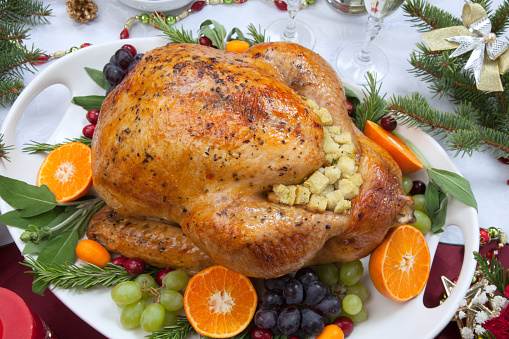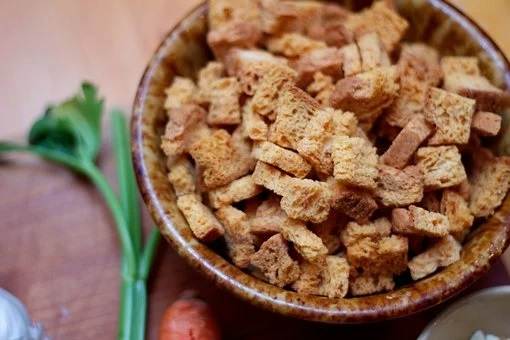So, you bought your turkey, thawed it out, washed it and seasoned it to your liking; and, you’re ready to stuff your turkey right? ….STOP!!. Perhaps now is a good time to talk about stuffing your turkey. Did you know that there is considerable risk in cooking a home stuffed turkey? Read on and get the facts.
The Risks To Stuff Your Turkey
A stuffed turkey’s core ought to be cooked, for the minimum, at 165 degrees F. In other words, if you stick you cooking thermometer into the core of the turkey it should be at 165 degrees for the minimum. If the stuffing is improperly cooked it can cause illnesses. The bacteria here is the culprit and it can cause toxins to develop in the turkey, thus making it unsafe for consumption. For this reason, most cooks prefer to bake their turkey and stuffing separately.
Also, some ingredients added to the stuffing are potentially hazardous if improperly cooked or stored, and cook better in a separate casserole dish. For the most part you should not add uncooked meat or eggs to the stuffing.
Considering Whether To Stuff or Not To Stuff Your Turkey
Another, point from most cooks is that a stuffed turkey also takes longer to cook than an “unstuffed” one. However, if you still insist on stuffing your turkey, here are a number of things you should note.
1. Never stuff the turkey in advance.
The stuffing must be prepared when needed. However, you may chop your vegetable ingredients and prepare the bread in advance; but the liquids and most ingredients should not be added to the dry ingredients in advance. Do that when you are just about to stuff the turkey.
2. Do not stuff the turkey with cold or frozen stuffing.
Cold or frozen stuffing will slow down the cooking process. Also the stuffing should be loosely packed so while the turkey cooks it will be able to absorb the juices and expand naturally. If the turkey is tightly packed, it won’t cook thoroughly. Mathematically, you are allowed to stuff about 1/2 to 3/4 cups of stuffing per pound of turkey. Also, if you cannot fit a whole hand into the cavity of the bird you have over-stuffed the bird. There is no need to throw away extra stuffing, you may cook it alongside in a casserole dish or greased dish.
3. Use a thermometer.
Turkeys internal temperature must be at 160 degrees to 165 degrees F. Insert it into the center of the stuffing. However, if the turkey is cooked before the stuffing, you may remove the stuffing and continue to cook it while the turkey rests.
4. Do not leave the stuffing in the turkey.
Another important point to note is that you should not leave the stuffing in the turkey when it is cooked. Remove all stuffing from the cavity of the bird to a separate dish before serving. Stuffing and all leftovers should be refrigerated immediately after the meal or 2 hours after it is cooked. Stored leftovers should be used within 2 days and reheated at 165 degrees F before serving.
Still want to know more about turkey stuffing? Take a read about Stuffing Science.
Well, that’s it on stuffing that turkey. Wish you the best in your turkey roasting adventures. Now you can decide whether you want to stuff or not to stuff your turkey and the precautions you need to take if you do.


